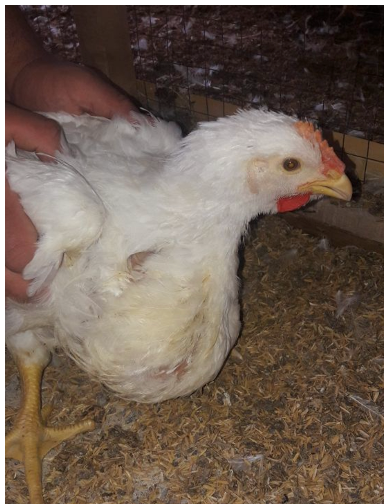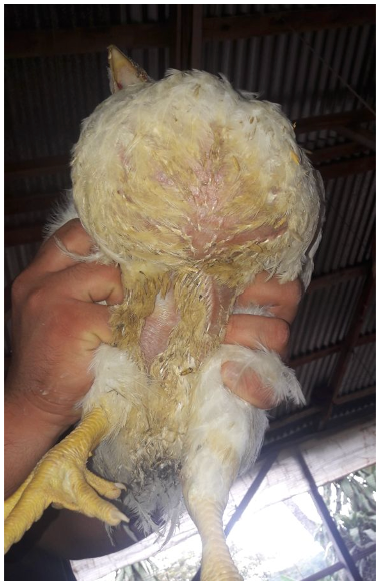



Crop disorders of chickens: Ingluvitis
Ingluvitis (pendulous or sour crop) causes and possible solutionsThe crop is an enlarged part of the esophagus located to the right of the trachea at the thoracic inlet. The walls of the crop are thin, and the organ is attached to the skin and clavicle by loose connective tissue. There are two muscles that support the crop and aid in the emptying process.
The main function of the crop is to store feed while the proventriculus and gizzard are full of feed. Shortly after the feed is ingested, it is normal for the crop to be distended and full of feed. As the feed in the gizzard is moved into the intestine, the crop begins to contract, emptying its content into the esophagus and supplying more feed to the proventriculus and gizzard.
Sour crop is similar to crop impaction except the crop becomes enlarged with soft, dough-like material and foul-smelling fluid. The crop wall becomes thickened, the walls are stretched and the crop loses the ability to go back into its original size when empty (Pictures 1 and 2).
The result is that the crop does not empty normally, and the contents become overgrown with harmful bacteria and yeast. Candida albicans is the yeast that typically overgrows. This yeast will often invade the wall of the crop and cause inflammation and white cheese-like patches on the interior lining. This condition is called "crop mycosis".


Occurrence
Crop mycosis may occur when birds eat spoiled feed or drink slimy, unclean water. It is also seen in young birds that are brooded under very hot conditions and drink excessive amounts of water. Lastly, crop mycosis can result when birds are treated for a long time with antibiotics and/or have other underlying disease problems.
Treatment
You can treat the infection (crop mycosis) by adding iodine or acidified copper sulfate to the drinking water as per label directions for 3 to 5 days. Be sure to keep waterers clean and free of slime. If the crop is very large or dilated, to aid normal passage of food and water some people have resorted to the use of a crop "bra". A simple crop bra can be fashioned from a tube sock with both ends open and openings made for the wings. There are also "birdy bras" available commercially for pet birds suffering this condition.
Differential diagnosis
Poor crop emptying can have other causes besides impaction or primary bacterial or fungal disease. Marek's disease often causes polyneuritis which may damage the vagal innervation of the crop. Usually, there will be additional neurological signs in affected animals that will help differentiate primary crop stasis. Obstruction/impaction of the lower gastrointestinal tract due to roughage, foreign bodies or even tumors may also result in poor crop emptying.
Parasitic ingluvitis due to infections with Capillaria species nematodes, protozoal infections such as trichomoniasis may also occur. Obtaining a crop fluid aspirate and examining the fluid microscopically will often help differentiate parasitic versus fungal crop infections. It is also advisable to do fecal examination to check for capillaria ova. Treatment of sour crop is dependent on the cause.








